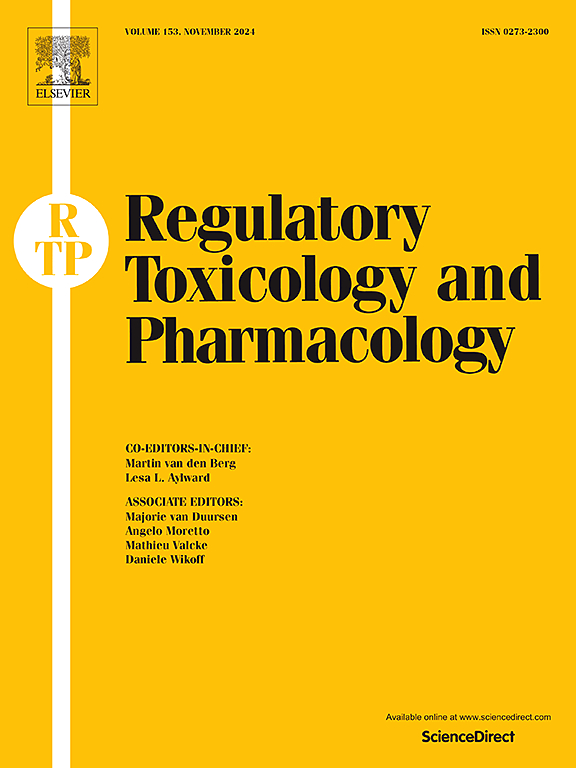生态高通量转录组学全转录组和靶向RNA测序的比较
IF 3.5
4区 医学
Q1 MEDICINE, LEGAL
引用次数: 0
摘要
2019年,美国环保署组织了一项联邦政府挑战,旨在识别和评估低成本、高通量的RNA测序技术,这些技术可以支持生态高通量转录组学新项目的目标。世界各地的创新者被邀请在公开竞赛中展示他们的解决方案。每个回答的求解者提供了一组来自四种水生生物的9个汇总RNA样本(n = 36个样本)。三个Solver团队提交的五个解决方案根据预先定义的评分标准进行评估,该评分标准考虑了准确性,精度,每个物种的转录组覆盖率,每个样本的成本和吞吐量。采用代表整个转录组5 - 11%的前哨基因集的靶向方法(TempO-Seq)被评为最佳解决方案。然而,所有这些方法都是可行的,并且有各自的优缺点。在后续调查中,基于前哨基因集的转录组起点通常被发现落在基于全转录组测序的10倍或更少的因子内。结果支持了广泛的测序技术和方法适用于这项工作的结论。详细和透明地报告所使用的方法将有助于支持基于科学的决策。本文章由计算机程序翻译,如有差异,请以英文原文为准。

Comparison of whole transcriptome and targeted RNA sequencing for ecological high-throughput transcriptomics
In 2019, the US EPA organized a federal government challenge aimed at identifying and evaluating low cost, high-throughput, RNA sequencing technologies that could support the aims of a new program in ecological high-throughput transcriptomics. Innovators worldwide were invited to demonstrate their solutions in an open competition. Each responding Solver was provided a set of nine pooled RNA samples from each of four species of aquatic organisms (n = 36 samples total). Five Solutions submitted by three Solver teams were evaluated according to a pre-defined scoring rubric that considered accuracy, precision, transcriptome coverage for each species, cost per sample, and throughput. A targeted approach (TempO-Seq) that employed sentinel gene sets representing 5–11 % of the whole transcriptome was ranked as the top solution. However, all were viable approaches and had specific strengths and weaknesses. In a follow up investigation, transcriptomic points of departure based on a sentinel gene set were generally found to fall within a factor of 10 or less of those based on whole transcriptome sequencing. Results support the conclusion that a wide range of sequencing technologies and approaches are suitable for the work. Detailed and transparent reporting of the approaches used will help support uptake in science-based decision-making.
求助全文
通过发布文献求助,成功后即可免费获取论文全文。
去求助
来源期刊
CiteScore
6.70
自引率
8.80%
发文量
147
审稿时长
58 days
期刊介绍:
Regulatory Toxicology and Pharmacology publishes peer reviewed articles that involve the generation, evaluation, and interpretation of experimental animal and human data that are of direct importance and relevance for regulatory authorities with respect to toxicological and pharmacological regulations in society. All peer-reviewed articles that are published should be devoted to improve the protection of human health and environment. Reviews and discussions are welcomed that address legal and/or regulatory decisions with respect to risk assessment and management of toxicological and pharmacological compounds on a scientific basis. It addresses an international readership of scientists, risk assessors and managers, and other professionals active in the field of human and environmental health.
Types of peer-reviewed articles published:
-Original research articles of relevance for regulatory aspects covering aspects including, but not limited to:
1.Factors influencing human sensitivity
2.Exposure science related to risk assessment
3.Alternative toxicological test methods
4.Frameworks for evaluation and integration of data in regulatory evaluations
5.Harmonization across regulatory agencies
6.Read-across methods and evaluations
-Contemporary Reviews on policy related Research issues
-Letters to the Editor
-Guest Editorials (by Invitation)

 求助内容:
求助内容: 应助结果提醒方式:
应助结果提醒方式:


